Duck out of Water
Here's a quiz for you. What do you think this could mean?
鴨居 (かもい) wild duck + to exist
a. lame duck in politics
b. scapegoat
c. type of frame in traditional Japanese architecture
d. beam positioned too low in a house, one that makes you have to duck
By the way, 鴨 is non-Joyo.
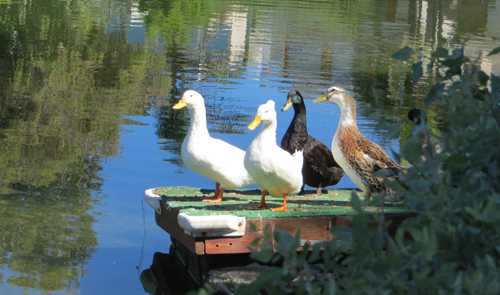
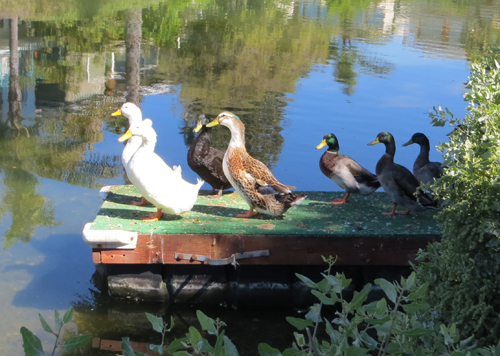
Photo Credits: Eve Kushner
These ducks hang out in the canals of Venice, California. Given that, do they qualify as domestic ducks, wild ducks or hybrids of the two?.
Here's the answer to the quiz:
c. 鴨居 (かもい: wild duck + to exist) means "type of frame in traditional Japanese architecture."
More specifically, it's a type of frame around a door.
And more specifically than that, it's the upper part of such a frame.
Well, to be even more specific, it's the upper part of a frame around a sliding door or partition, and it's typically equipped with tracks to enable the sliding to happen.
Whew! One page of a site about Japanese architecture reveals that there are actually six types of 鴨居! There's a separate term for the lower part of the frame with its own track: 敷居 (しきい).
In discussions of traditional Japanese architecture, there's no shortage of terms or complex diagrams pointing to each little piece. I'm talking, for instance, about the first image at this link and the labeled photo at this link. My proofreader and I pored over each one, differentiating the 鴨居 from the 鴨居, the wider brown 枠 (frame) from the narrower black 框 (かまち, which is non-Joyo), and so on. And we went over the names of each feature in this photo from a historic house (now a museum) on Sado Island:
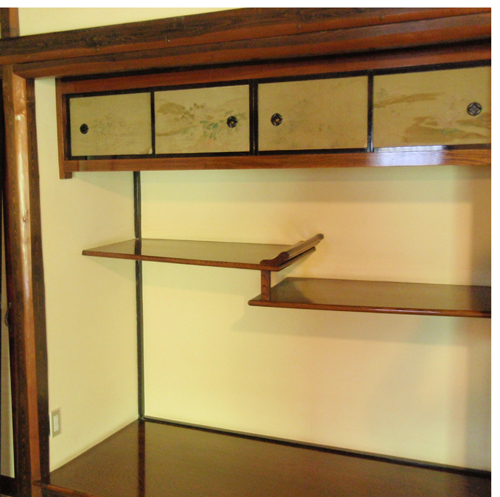
Photo Credit: Eve Kushner
I'm surprised to learn that the labeled photo at the second link is a perfect match for what I saw in this Sado 床の間 (とこのま: alcove where people display art and flowers). There is a rhyme and a reason to everything in Japanese architecture. Nothing is random.
But just when I felt that I was figuring things out, I was wrong, as when I unearthed what seemed to be a universal color scheme.
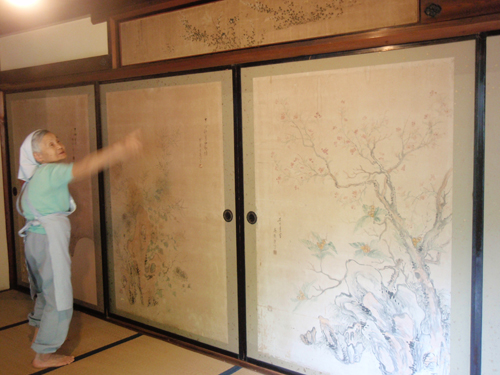
Photo Credit: Eve Kushner
Working from these two photos from the Sado house, as well as the second photo at a blog, I thought, "Aha! Outer frames (枠) are always brown, and inner ones (框) are black." I was thrilled with the discovery.
And I was wrong. They can be the same color. One is usually brown or dark brown, but they also could be dark gray, white, and so on.
Sigh. Where I perceived individuality, I instead found set patterns. And where I hoped to find strict rules, I instead happened upon randomness!
I adore traditional Japanese architecture, but I know now that the terminology overwhelms me. In fact, I realize for the umpteenth time that in virtually everything I love about Japanese culture, there's a daunting amount of complexity. And I have to make a decision—dive in headlong or back off and relegate that information to a don't-need-to-know category.
Eventually, I settle on the same answer that always makes me happy. I will approach the topic and enjoy it from a kanji perspective, and if the rest comes, it comes.
So let's return to the wild duck that nearly flew away during this discussion! There are several etymological theories about 鴨居, including these:
• According to one blog, a 鴨居 is horizontal and is positioned somewhere between the ceiling and floor, so it reminded people of a water bird (鴨) flying through the house somewhere between the sky and earth! The kanji 居 can mean "to fly through" as well as "to exist."
• The yomi of 鴨 (かも) is similar to that of 神 (かみ: god). And in Ainu, かむ means "god." Another interpretation of 鴨居, then, is "a god exists."
• People may have built 鴨居s in the shape of ducks, though that remains uncertain.
• Yet another proposal is that 鴨居 comes from 噛む居, in which 噛む (かむ: to bite) means “to meet well." (By the way, 噛 is non-Joyo.)
Whether or not you call 鴨居 ateji depends on which perspective you endorse.
Goodness, etymology can be overwhelming, too! But it's almost always more colorful and imaginative than anything my brain can conjure up while I stare at a wood frame!
If you want to find out much more about these frames, traditional Japanese architecture, and much more, be sure to check out the 99th essay, which is Essay 1943 on 枠 (frame; framework; enclosure; limit; quota). Here's a sneak preview:
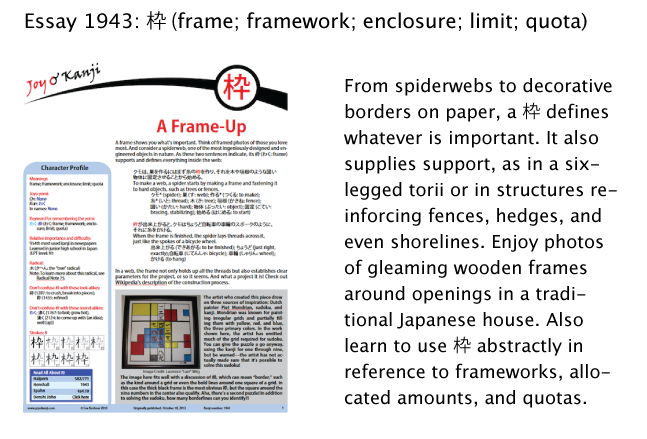
Have a great weekend!

Comments